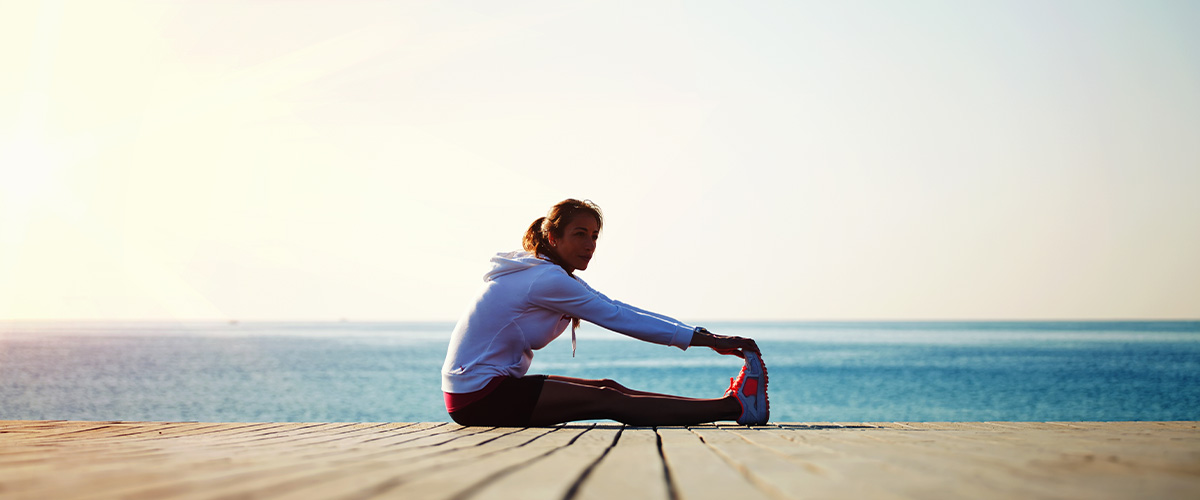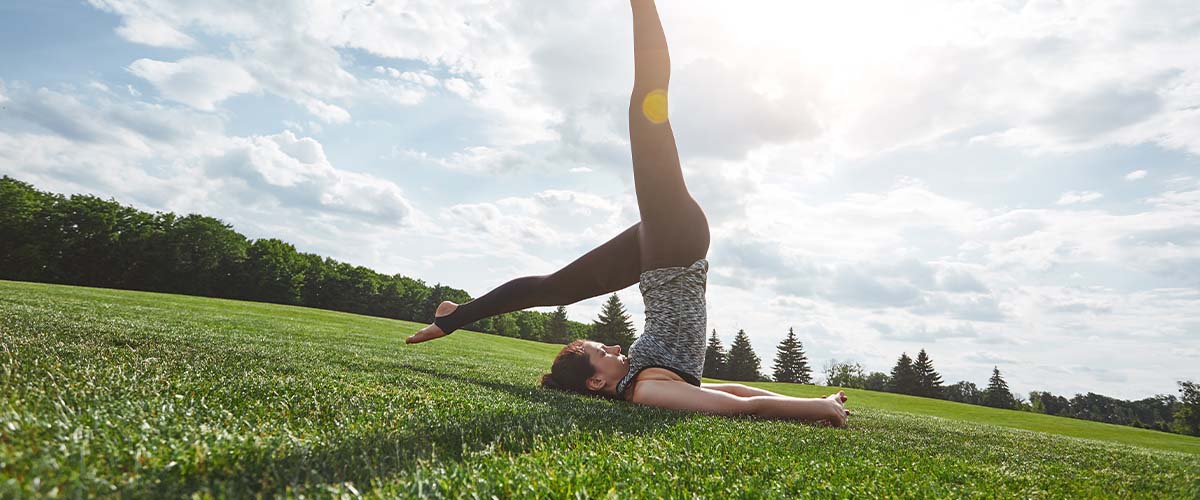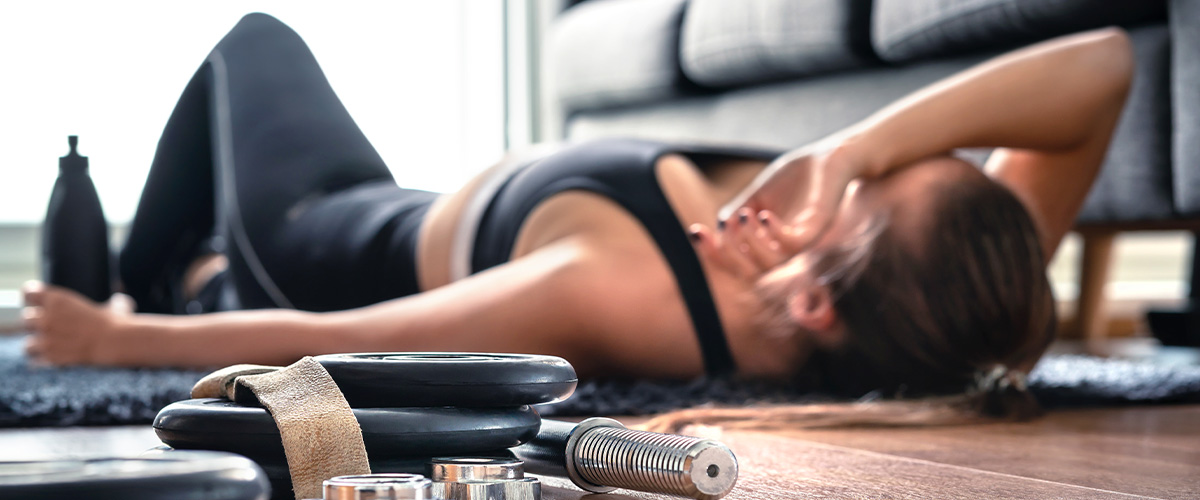Treatment & Therapy
Why You Need Post-Workout Massage?
23.08.2022.jpg)
.jpg)
If you want to include exercise in your well-being journey, but are concerned of the pain and aches that come after; or if you are not getting the expected and faster results from your exercises, this article is for you!
No matter how busy and exhausting lives we’re going through, most of us are now aware of how significant it is to spare self-care times for ourselves and adopt a healthy lifestyle. Being active and staying fit is also a valuable part of our self-care. However, we sometimes aren’t able to exercise as often and regularly as we intend to, for certain effects of our exercise routines on our daily lives. Or no matter how active we are, we find it hard to achieve the fitness targets we aspire to. This, in turn, may result in mental and spiritual downfalls, even depression, as we lose the motivation and the confidence to keep going.
If for such problems you too are unable to exercise as regularly and frequently, or to succeed in your fitness targets despite your intense routines, post-workout massage therapies may be the key solution you need.
Those starting a new training routine know it well that after exercise, we often experience physical pains, accompanied by burning and numbness sensations, that hinder our mobility. You may also know these aches as muscle fever, in medical terms, as DOMS (delayed onset muscle soreness). But don’t underrate it by saying it’s just a soreness; if neglected, these aches can last for weeks. They can even be a sign of more serious injuries.

You should not forget that even the most professional athletes may experience sports injuries. And no matter how active and in shape you are, the odds of getting exposed to risks like muscle tightness, low back and knee pain, heel spurs, sprains, shin splint, tendon inflammation and ruptures, cracks and dislocations in an exercise aren’t as slim as you think. So, what to do to avoid these risks? Well first, we need to give the necessary time and pay attention to warm-ups and cool-downs. But just doing these may also not be enough to achieve a quick and effective recovery. This is where massage comes into play.
Scientific studies reveal that even a 15-minute massage after workouts, especially when received regularly, brings out great benefits in increasing the speed of physical recovery through faster regeneration of muscle fibrous and quick pain relief.
Reduces your aches and the risk of inflammation
During training, your muscles go into shock and over-tense, causing you to suffer aches and pains afterwards. The main reason for this is the micro-tears that occur in muscles during your workouts. Upon your exercise, your cells take action to repair these tears, but without enough internal and external support, your recovery will be slow, allowing in the meanwhile to incur swelling and inflammation in your muscles.
A proper massage after sports will help ease your pain and reduce your risk of inflammation. According to the study by MD, PhD Mark A. Tarnopolsky and colleagues from McMaster University, Canada in 2012, a post-workout massage reduces both muscle soreness and inflammation, similarly to anti-inflammatory pain relievers. In fact, it was also found that, while such anti-inflammatory drugs impeded the muscle repair and development, massage promoted muscle recovery.

Enhances your recovery
A massage you receive right after your workout triggers mitochondrial generation, which aids your muscle cells to get the oxygen and nutrients they need to recover. It also accelerates the removal of toxins by improving your blood flow and lymphatic circulation throughout your muscles. This as a result increases the speed of recovery of your muscles and reduces your aches as well as the risk of injury.
Promotes your blood circulation
A healthy blood circulation is most essential for cell regeneration. While your blood circulation slows down due to tension and inflammation in your muscles after exercise, a good massage stimulates your blood flow and improves your blood circulation as your muscles relax and the oxygen circulation increases.
Increases your flexibility
A massage received after exercise helps your muscles and joints relax and stretch by restoring oxygen and blood flow to your tensed and shortened muscles. That way, you get to avoid risks like stiff necks and posture disorders.
Improves your muscle strength
Apparently if you get a massage after your workouts, you won’t have to worry as to whether your body can afford to start more intense routines. Pursuant to the findings of a recent study published in the Journal of Strength and Conditioning Research in the USA, the muscle strength of people who receive massage after exercise, increases faster and at a higher rate.
Encourages your positive feelings
Exercise may create an increase in levels of stress hormones such as cortisol. Moreover, experiencing aches and injuries after exercise may drive you to despair and fall into negativity including depression and anxiety.
A massage you’ll receive after your exercise, on the other hand, will not only enable you to follow your routines more comfortably by bringing relaxation and recovery to your body, but also by increasing your oxygen intake and stimulating your happy hormones like endorphins and serotonin, will invite you to feel more stress-free, energetic and motivated.
Refreshes your skin
When we work-out, our skin cells also activate to remove toxins. But if you’re hoping to get rid of these toxins with a quick shower and face wash afterwards, think again. Your water, blood and lymph circulation slows down as a result of your exercise, thus it’s quite possible that your body will reabsorb the toxins released in a very short time. To prevent this, getting a massage that will stimulate your circulations again will promote the renewal of your skin by triggering your toxin removal. This may even reduce the appearance of cellulite!

Now that you know the benefits, you may be asking which massages you should opt for to achieve them. Don’t worry, we've got you covered in that as well. Here are the few valuable suggestions for you:
Swedish Massage: Swedish massage is an excellent choice for relaxation after workouts. Namely, with long strokes, kneading and rolling techniques, it supports the circulation in your body, helps clear metabolic wastes in your muscles and supports your recovery speed. It’s also a great stress reliever as it stimulates serotonin and dopamine hormones.
Sports Massage: In sports massage, in order to treat sports injuries and improve the athlete’s mobility, usually the aching and strained areas or muscle groups are targeted and massage applied by combining various massage techniques like assisted stretching and deep tissue massage, trigger point therapy, and myofascial relaxation, etc..
Thai Massage: Thai massage is one of the primary choices of fitness gurus thanks to its regenerating and energizing qualities. Mingling yoga postures with acupressure techniques, by dynamically stretching your whole body, Thai massage repairs your muscles, opens clogged lymph nodes and thus increases your blood circulation and oxygen intake, and reduces stress by stimulating your happy hormones.
Deep Tissue Massage: This massage aids to relieve lymph nodes and tension by targeting the deeper layers of your muscles and connective tissues. It assists in getting rid of adhesions, relieving pains and raising your recovery speed with deep pressure techniques applied with slow and continuous strokes by focusing on aching areas such as back, shoulders, legs, etc.
Lymphatic Drainage Massage: In lymphatic drainage massage, where pressure and brushing techniques are used with upward circular movements, blood flow can be accelerated and metabolic wastes, including lactic acid accumulated in the muscles during exercise, can be induced to be discharged. Accordingly, this massage can make valuable contributions to your recovery especially after your intense and intermittent exercises.
Reflexology: Reflexology, one of the ancient Chinese practices, focuses on the acupressure points on your feet connected to your certain body parts and internal organs, helping your metabolism to speed up and remove toxins, as well as relaxing your central nervous system and triggering the release of endorphins, making you unwind both mentally and spiritually.
Aromatherapy Massage: Aromatherapy massage, which has great benefits particularly in reducing the pressure like stress and anxiety given rise to by pains, aches and injuries, loosens your hardened joints and muscles with slow touches accompanied by healing aromatic oils, and helps you to get in a calmer mood by relaxing your senses.
Please Note: The scientific findings of the Ohio State University Wexner Medical Center published in the British Journal of Sports Medicine suggest that getting a massage immediately after your exercise can help obtain the above-mentioned benefits between 20% and 40% higher. That’s why we recommend you consider frequenting the spas like a club spa, which combines the concept of a fitness center and spa, or a hotel/resort spa or destination spa, as they offer treatments and programs focused solely on your well-being. Speaking of which, if you’d like to get more information on spa types, you can take a look at our article here.
In conclusion, a massage at the end of your exercise is an excellent self-care content to reap the fruits of the time and effort you put into your workouts. Let us finally remind you that; treating your mental and spiritual aspects with love and compassion as much as you care for your body will greatly influence your well-being! Wishing you many serene self-care moments…
Step into a realm where the soothing power of water, the calming essence of nature and the healing effect of herbs...
Read moreOur life is like a canvas; each stroke of the brush creates a unique masterpiece that tells the story of our...
Read moreBody, mind, spirit... The three fundamental aspects of our...
Read more